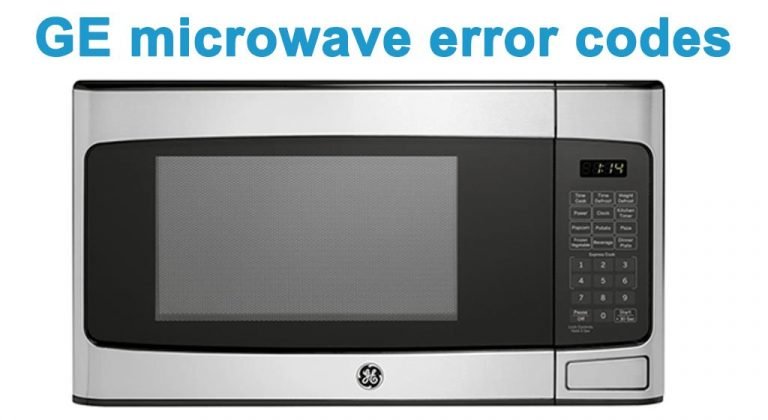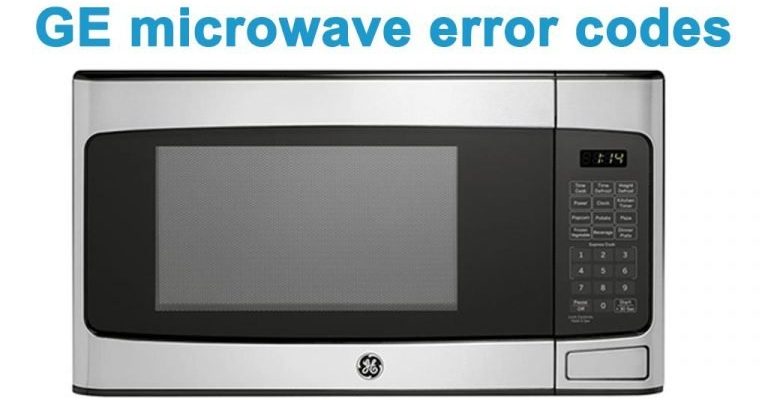
When you see an error code like E3, it’s essentially your microwave trying to tell you something isn’t quite right. It’s like when your car’s check engine light comes on—it’s a signal that calls for attention. Specifically, for GE microwaves, Error Code E3 often relates to problems with the sensor or the keypad. These components play a crucial role in the operation of your microwave, acting like the brain and the nerves, respectively. Without them functioning correctly, your microwave can’t perform its job efficiently. But don’t worry; this isn’t necessarily a sign you need to rush out and buy a new one. Let’s delve into what might be causing this issue and how you can go about fixing it.
Understanding the Sensor Error
The most common cause of an E3 error on GE microwaves is a problem with the humidity sensor. This tiny component is responsible for detecting the amount of moisture inside the oven cavity, which helps the microwave adjust its power level accordingly. Think of it like a thermostat that ensures your food is heated evenly and efficiently. When this sensor malfunctions, it can send incorrect signals to the microwave’s control board, triggering the E3 error code.
Why does the sensor fail? It could be as simple as a bit of debris obstructing its path or even a buildup of grease and grime over time. Imagine trying to see through a dirty window—the view is unclear, and you might make mistakes based on what you perceive. Similarly, a dirty sensor can mislead your microwave into thinking something’s wrong. To resolve this, try carefully cleaning around the sensor area with a soft cloth and a bit of dish soap. Make sure the microwave is unplugged before you start. If cleaning doesn’t help, the sensor itself might be faulty and require replacement. In this case, it might be best to call a professional.
For those who like a DIY challenge, replacing a sensor is possible, though it involves handling microwave components. Always ensure safety is your priority—if in doubt, seek professional help. A technician can diagnose the issue more precisely, ensuring your microwave is back to working condition without any unnecessary risks.
Keypad Malfunctions and Their Role
Another possible culprit behind the E3 error is a malfunctioning keypad. The keypad is your microwave’s interface, similar to a keyboard for your computer. It’s how you communicate with your microwave, telling it how hot to cook your food or for how long. If the keypad isn’t working right, it can send incorrect messages to the control board, causing confusion and, subsequently, error codes.
Keypad issues might arise from physical damage, such as spills that have seeped inside, or wear and tear over the years. Imagine trying to type on a sticky keyboard—frustrating, isn’t it? A sticky keypad can cause random inputs, leading to error codes like E3. If you notice the keypad isn’t responding well, try cleaning its surface gently. Be sure there’s no power going to the microwave when you do this.
Sometimes, however, cleaning isn’t enough. If the keypad is damaged internally or the circuit board is faulty, you might need to replace the entire keypad assembly. This can be a bit more complex and usually requires disassembling part of the microwave. If you’re comfortable with small repairs, you might attempt this; otherwise, consider professional repair services, which might be a safer bet.
Seeking Professional Help: When and Why
You’ve tried cleaning and tinkering, but the E3 error persists. At this point, calling a professional might be your best course of action. Sometimes, the error could be due to deeper electrical issues that aren’t immediately visible. Electric components can be tricky; they’re like the hidden wiring in your walls. You can’t always see what’s wrong, but you know something isn’t working as it should.
A trained technician has the expertise to open up your microwave, test components, and accurately diagnose the problem. This can save you time, effort, and potential mistakes that could lead to further issues. Remember, while microwaves are everyday appliances, they do contain high-voltage components that can be dangerous if mishandled.
Furthermore, seeking professional repair might be more cost-effective than you think. Before deciding on a repair or replacement, consider getting an estimate. Many service centers have flat fees for diagnostics that can give you a clearer picture of what you’re dealing with. It’s always better to be safe and ensure your appliance gets the right fix it deserves.
Preventative Measures and Final Thoughts
Now that you have a basic understanding of what might cause the E3 error on your GE microwave, consider taking some steps to prevent this from happening in the future. Regular cleaning of your microwave, including the inside where the sensor is located, can help maintain its efficiency. Just like you wouldn’t let dust accumulate on your computer screen, keeping your microwave’s components free from dirt can prevent many common issues.
In addition, handle the keypad with care. Avoid pressing too hard or spilling liquids on it. You might even consider using a protective cover if you’re prone to kitchen spills. Small habits like these can extend the life of your microwave and keep those pesky error codes at bay.
In conclusion, while seeing an E3 error on your GE microwave can be a bit of a nuisance, it’s something you can often troubleshoot with a bit of patience and care. Remember, if at any point you feel uncertain, don’t hesitate to call in a professional. They’re there to help, ensuring your microwave keeps serving you delicious, warm meals without a hitch!
